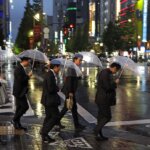The ALS #IceBucketChallenge is probably the most successful viral campaign of the summer. Not only did it raise awareness for ALS, but it also generated $41.8 million in donations as of August 21. According to the ALS Association, these donations came from existing donors and 739,275 new donors.
In this blog post, we examine how the ALS #IceBucketChallenge became a viral sensation by applying Jonah Berger’s six STEPPS to viral marketing. We also include tips on how your nonprofit organization can launch a similarly successful campaign.
The more of these six components you are able to integrate in a campaign, the more likely it people will share it, talk about it, and take action. The #IceBucketChallenge, as you will learn, had nearly all six components.
SOCIAL CURRENCY: PARTICIPANTS FEEL SPECIAL
Berger’s first principle to viral marketing is social currency which suggests people are more likely to share and take action on something that makes them feel smart, cool, and in-the-know.
To have the privilege of pouring a bucket of ice over your head, you had to be nominated. Once you’ve been nominated and complete the challenge (or donate $100 to the ALS Association), you would then nominate three to five friends or family. This exclusivity made participants feel special, so they’re more likely to take action, share it, and talk about it.
APPLYING SOCIAL CURRENCY TO YOUR NEXT CAMPAIGN
In your nonprofit’s next awareness campaign, apply social currency by giving people an opportunity to feel smart, cool, and in-the-know. Make them feel special by giving select people VIP experiences, sharing exclusive information, and allowing your supporters to toot their own horns. Click here for five viral marketing ideas to create social currency.
TRIGGERS: WARM WEATHER IS THE PERFECT TRIGGER
Fill in the blank: _____ makes people think of my organization. The more someone encounters your trigger, the more likely he or she will talk about it, which then creates more awareness for the campaign.
For the ALS #IceBucketChallenge, there are many likely triggers; ice, disabilities, or any celebrity that has participated. But I think the best trigger is the weather. The #IceBucketChallenge started in June. If you’ve seen any #IceBucketChallenge video, there’s a good chance that it will come to mind when you’re sweating from the hot summer weather.
APPLYING TRIGGERS TO YOUR NEXT CAMPAIGN
Having a prevalent trigger in your campaign increases the likelihood of people thinking about — and therefore talking about — your campaign. Consider what everyday items people can associate with your campaign. Learn how UNICEF, Dove, and Rebecca Black all leveraged triggers to increase word of mouth.
EMOTION: IT EXCITES, AMUSES, AND ANGERS PEOPLE
According to Berger, people are more likely to spread the word and take action when they experience high-arousal emotions, which include awe, excitement, anger, amusement, and humor.
The #IceBucketChallenge was easily exciting, amusing, and humorous. Who wouldn’t want to see a close friend douse themselves in a bucket of ice?
But the #IceBucketChallenge also angered some people who criticized the campaign. The funny thing about anger is that — like excitement and humor — it gets people to act. Angry people posted to social media about their feelings about the campaign, thus raising awareness for it.
APPLYING HIGH-AROUSAL EMOTIONS TO YOUR NEXT CAMPAIGN
When developing an awareness campaign, focus on leveraging high-arousal emotions. Instead of making people feel sad, make them angry. Instead of making them happy, make them excited. Take a look at these five examples of how brands and nonprofit organizations have leveraged high-arousal emotions to get people to share and take action.
PUBLIC: IT MAKES THE INVISIBLE VISIBLE
The easier something is to see, the more likely people will talk about it, which simplifies the process of raising awareness for it. Take for example ribbons for various causes, Livestrong bracelets, and “I voted” stickers. These items visualize and represent something that’s typically invisible. For example, something as silent and private as prostate cancer was made visible every November thanks to Movember, when men are encouraged not to shave for the month to raise awareness for the cancer.
Only 30,000 people in the U.S. have ALS, so to many of us it’s a quiet disease unless you know someone affected by it. Thanks to videos on social media, the ALS #IceBucketChallenge found a way to be visible.
APPLYING THE NOTION OF PUBLIC TO YOUR CAMPAIGN
When you develop your next campaign, look for opportunities to make it as visible as possible. For example, consider swag: branded keychains are nice, but people usually have their keys in their pocket or purse, so bumper stickers and reusable bags are more likely to get people talking. Also consider the medium: instead of asking event attendees to invite someone via email, encourage them to invite friends via social media, which is more public.
PRACTICAL VALUE & STORIES
The two other principles of viral marketing, according to Berger, are practical value and stories. According to Berger, the more principles you’re able to integrate in a campaign, the more likely it will go viral.
We believe if the #IceBucketChallenge provided people very useful information and highlighted stories of individuals affected by ALS, it would have become even more popular. Nevertheless, having four out of six of the principles was enough to get the #IceBucketChallenge to become one of the most talked about campaigns of the summer.
by Michelle Thai, who has written for MediaCause.Org






























